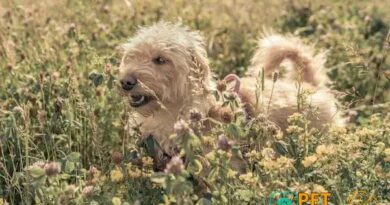What is Matting
What is Matting?
Matting refers to the tangling and clumping of a dog’s fur, which can occur for various reasons, including lack of grooming, exposure to moisture, and the natural shedding process. When a dog’s coat becomes matted, it can lead to discomfort and even skin issues if not addressed promptly. Understanding what matting is and how it affects your dog is crucial for maintaining their overall health and well-being.
Causes of Matting
There are several factors that contribute to matting in dogs. One of the primary causes is insufficient grooming. Dogs with long or curly coats require regular brushing to prevent their fur from tangling. Additionally, moisture from rain, snow, or swimming can exacerbate matting, as wet fur is more prone to clumping. Other causes include shedding, where loose fur becomes trapped in the remaining coat, and the dog’s activity level, which can lead to friction and tangles.
Types of Coats Prone to Matting
Certain dog breeds are more susceptible to matting due to their coat type. Breeds with long, flowing hair, such as the Maltese or Shih Tzu, are particularly vulnerable. Similarly, curly-coated breeds like Poodles and Bichon Frises can also experience matting if not groomed regularly. Understanding the specific grooming needs of your dog’s breed can help prevent matting and keep their coat healthy.
Signs of Matting
Recognizing the signs of matting is essential for timely intervention. Common indicators include visible tangles or clumps in the fur, a change in the texture of the coat, and discomfort when touching the affected areas. Dogs may also exhibit signs of irritation, such as scratching or biting at their skin. If you notice any of these signs, it’s important to address the issue promptly to avoid further complications.
Health Risks Associated with Matting
Matting can pose several health risks for dogs. When fur becomes matted, it can trap moisture and dirt against the skin, leading to skin infections, hot spots, and irritation. Additionally, severe matting can restrict movement and cause pain, making it difficult for your dog to walk or play comfortably. Regular grooming is essential to mitigate these risks and ensure your dog’s coat remains healthy.
How to Prevent Matting
Preventing matting requires a proactive approach to grooming. Regular brushing is key, especially for breeds prone to tangling. Aim to brush your dog’s coat at least once a week, or more frequently for long-haired breeds. Additionally, consider scheduling professional grooming sessions every few months to maintain your dog’s coat and address any potential matting issues before they escalate.
How to Remove Mats
If your dog already has mats, it’s important to remove them carefully to avoid causing pain or injury. Start by using a detangling spray to loosen the mat, then gently work through the tangles with a slicker brush or comb. For severe mats, it may be necessary to use scissors to carefully cut them out, ensuring you do not accidentally cut your dog’s skin. If you’re unsure, consult a professional groomer for assistance.
Tools for Grooming
Having the right grooming tools can make a significant difference in preventing and addressing matting. Invest in high-quality brushes, combs, and detangling sprays specifically designed for your dog’s coat type. Additionally, consider using grooming gloves or clippers for regular maintenance. The right tools can help keep your dog’s coat healthy and free from mats.
When to Seek Professional Help
If matting becomes severe or if you’re unsure how to safely remove mats from your dog’s coat, it’s best to seek professional help. Groomers have the experience and tools necessary to address matting effectively and safely. Regular visits to a groomer can also help maintain your dog’s coat and prevent matting from becoming a recurring issue.



